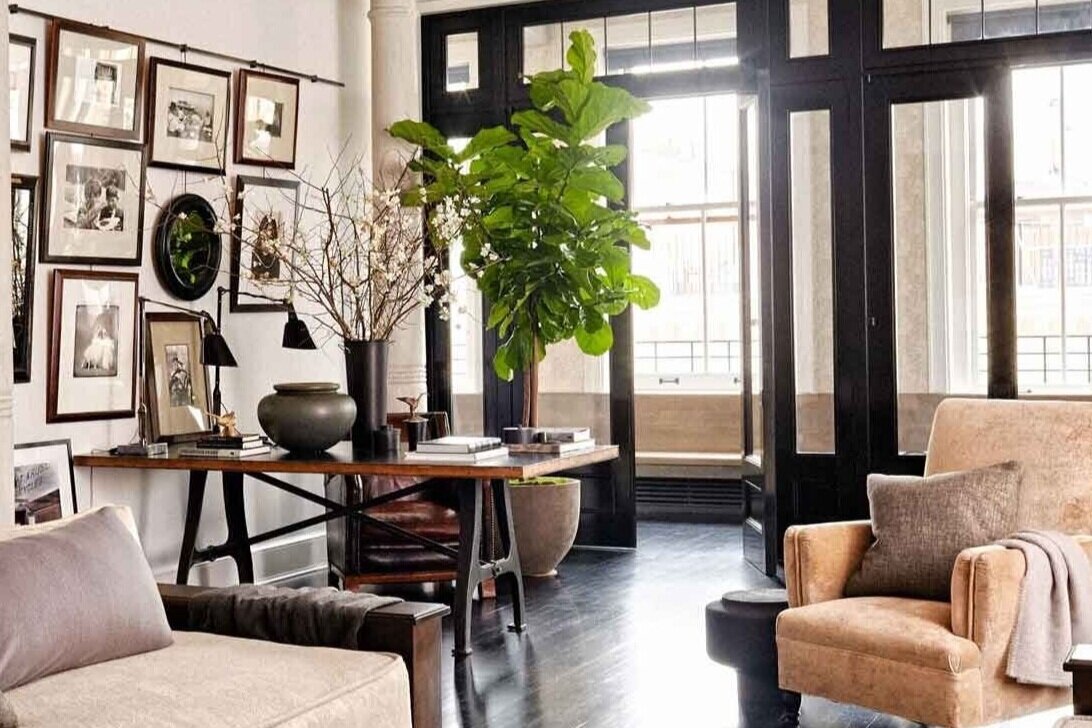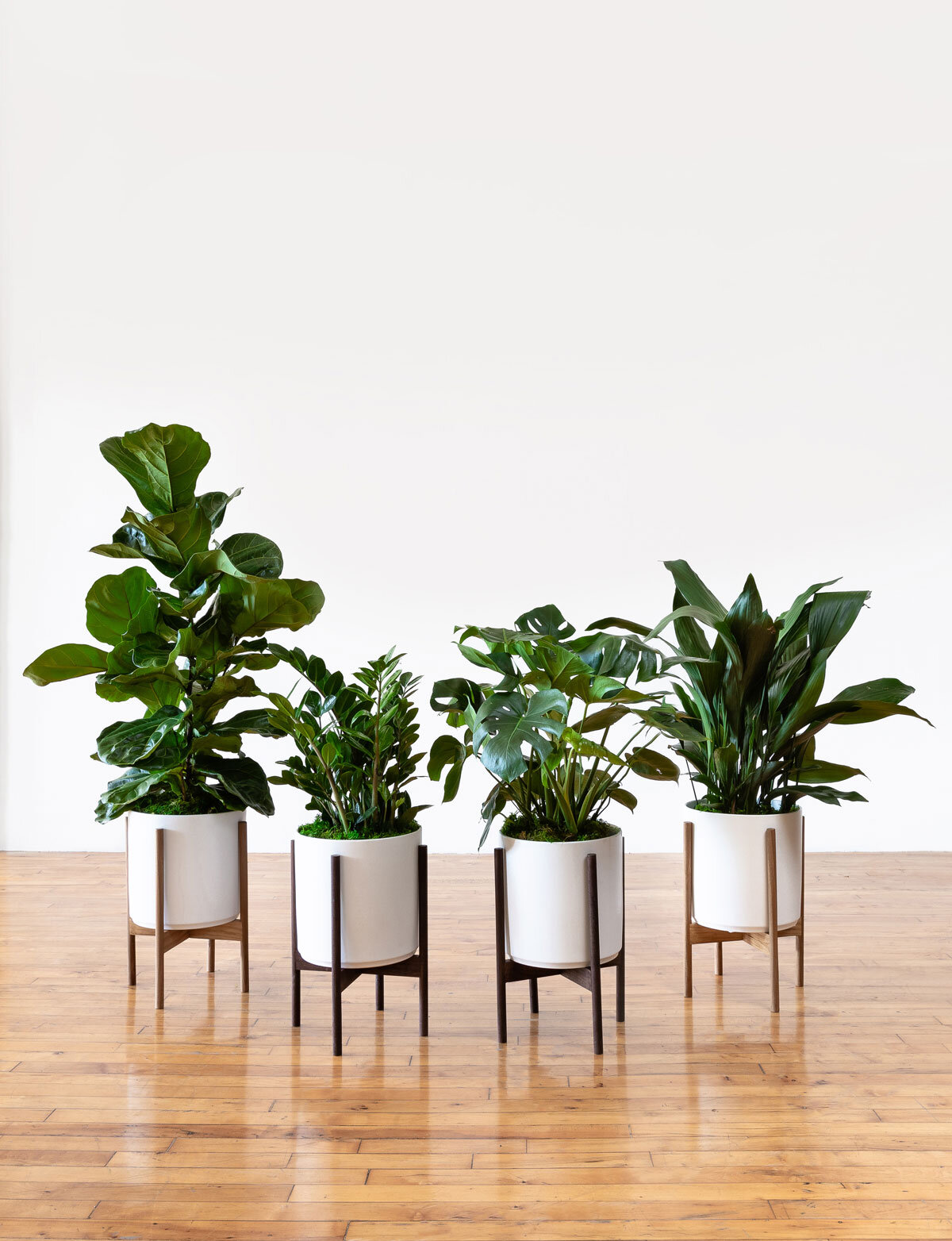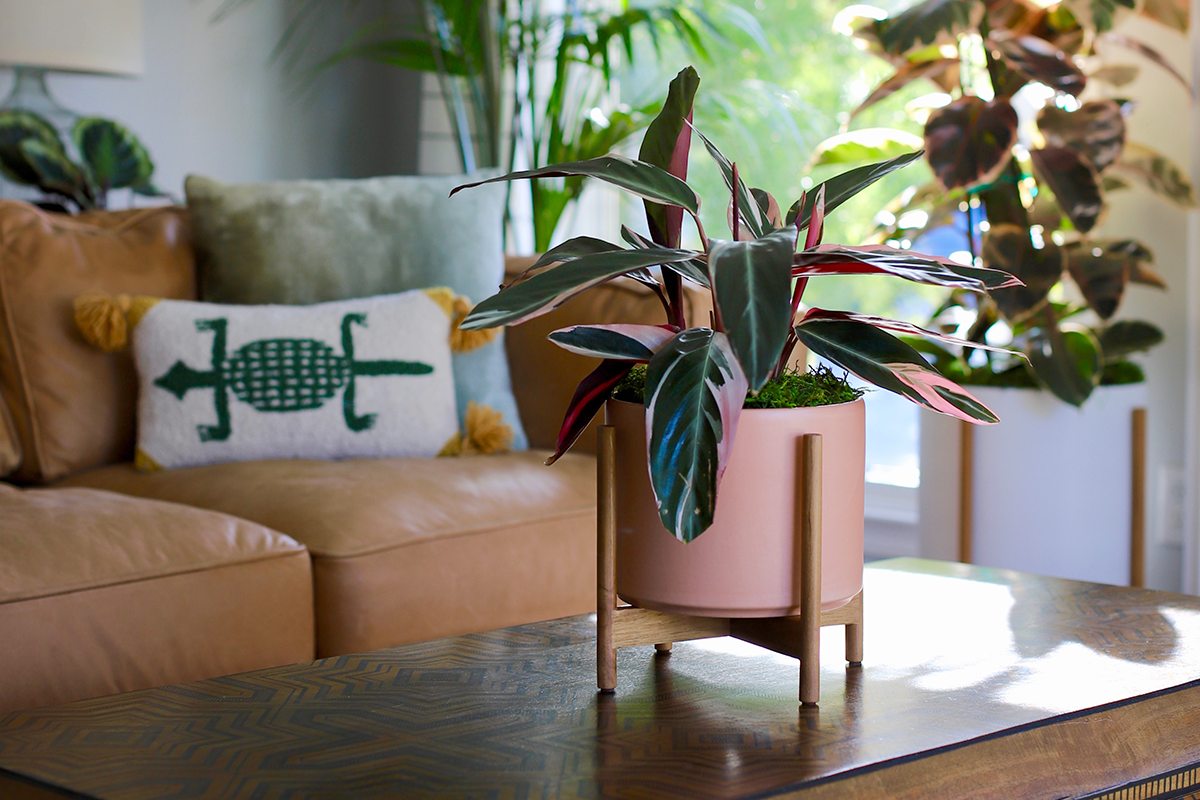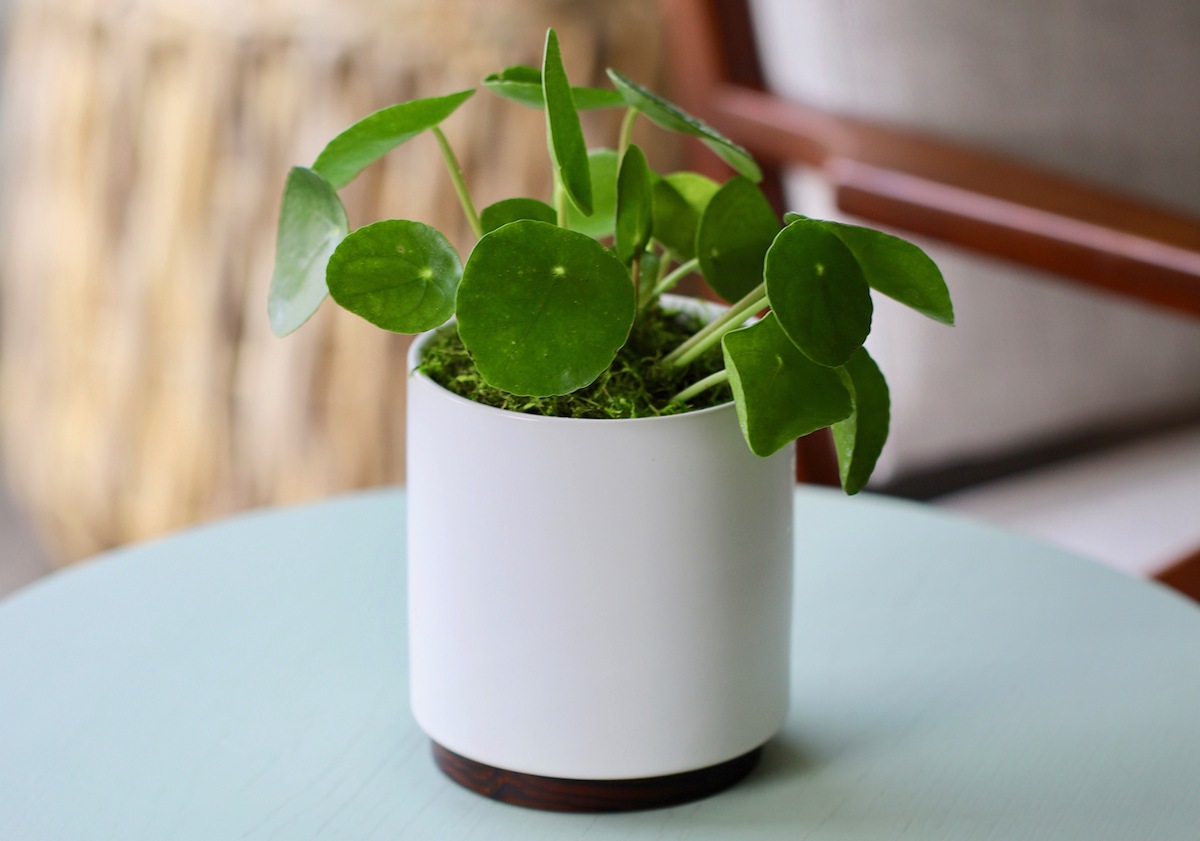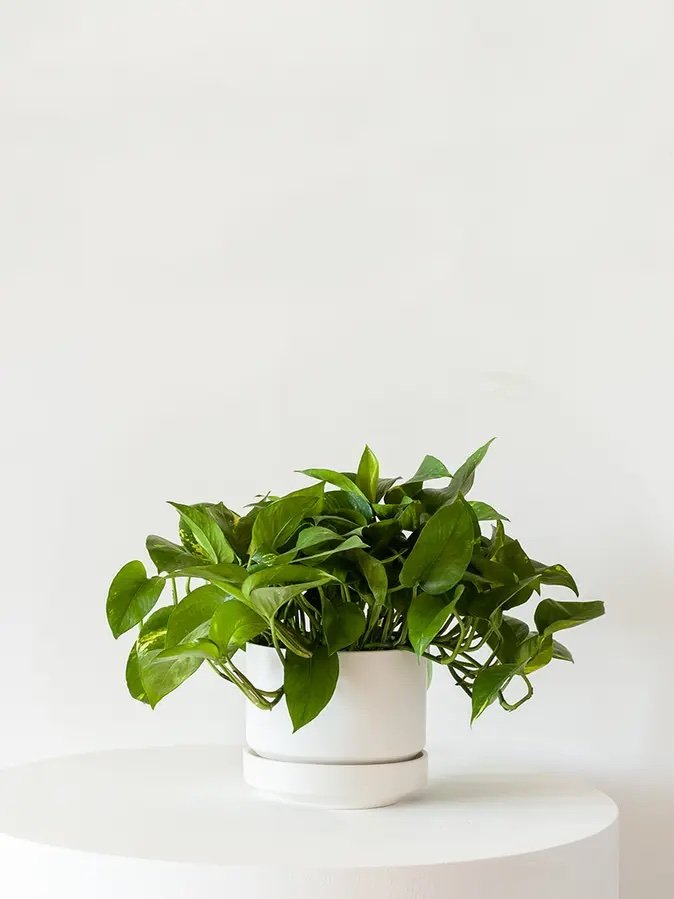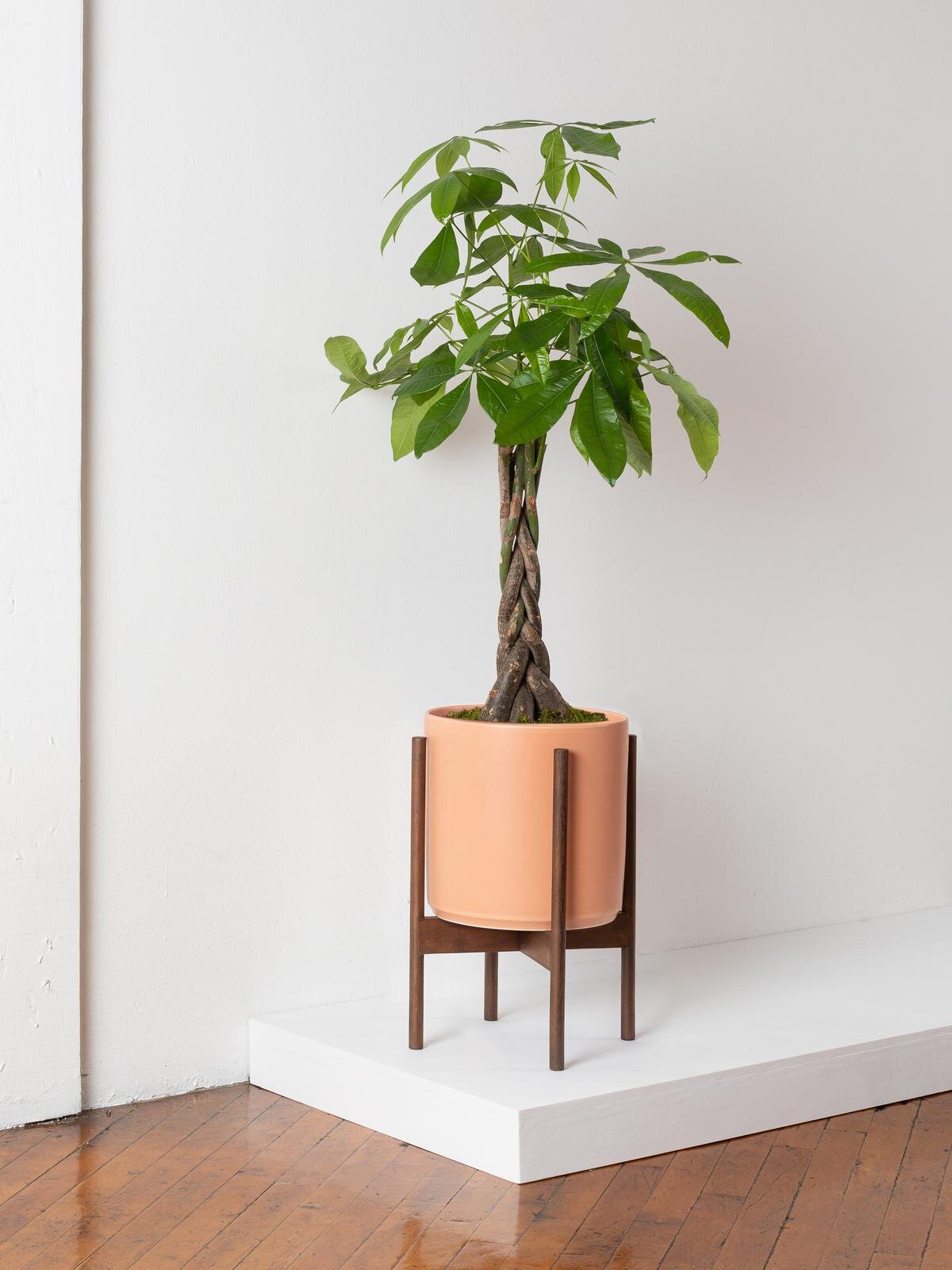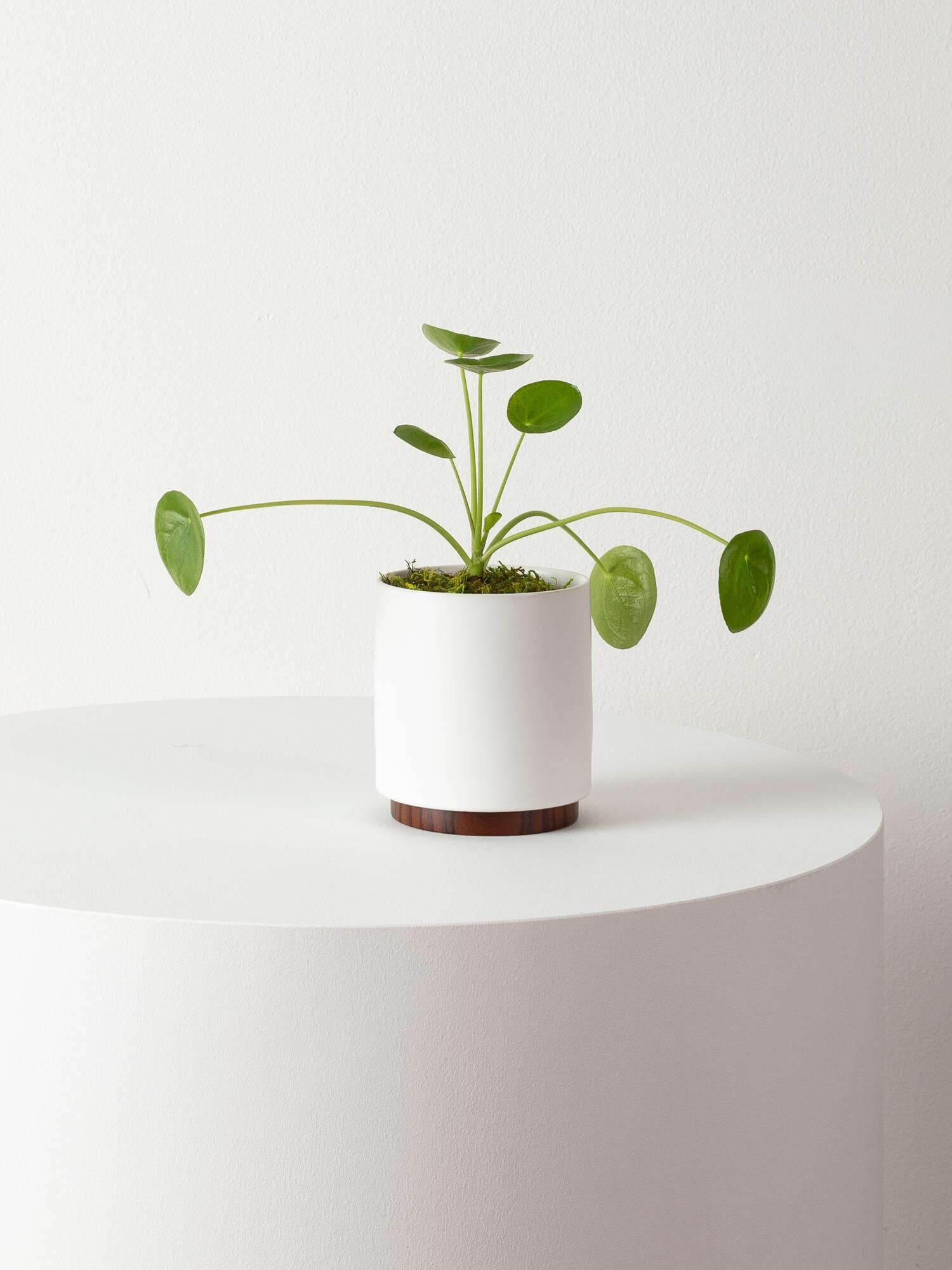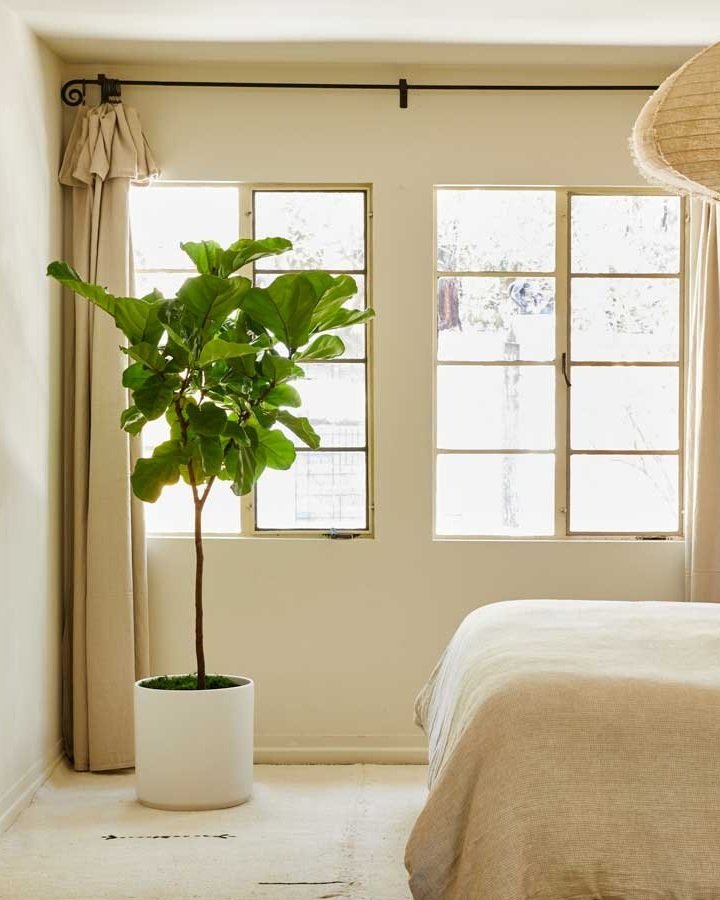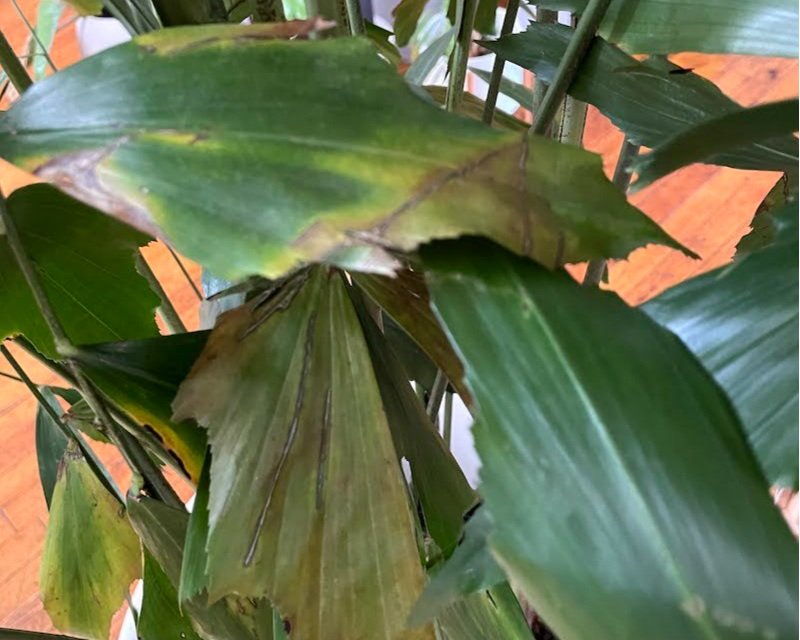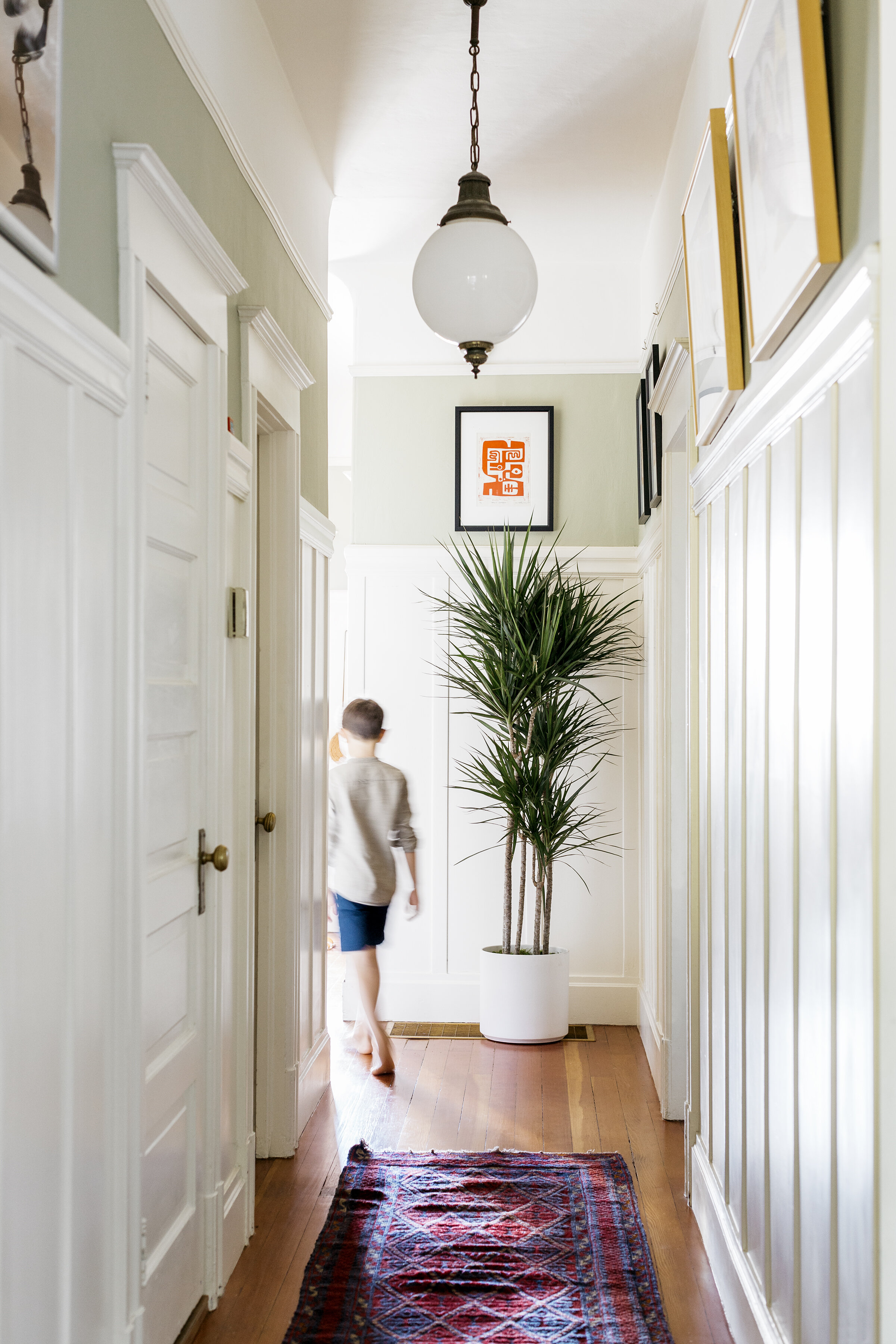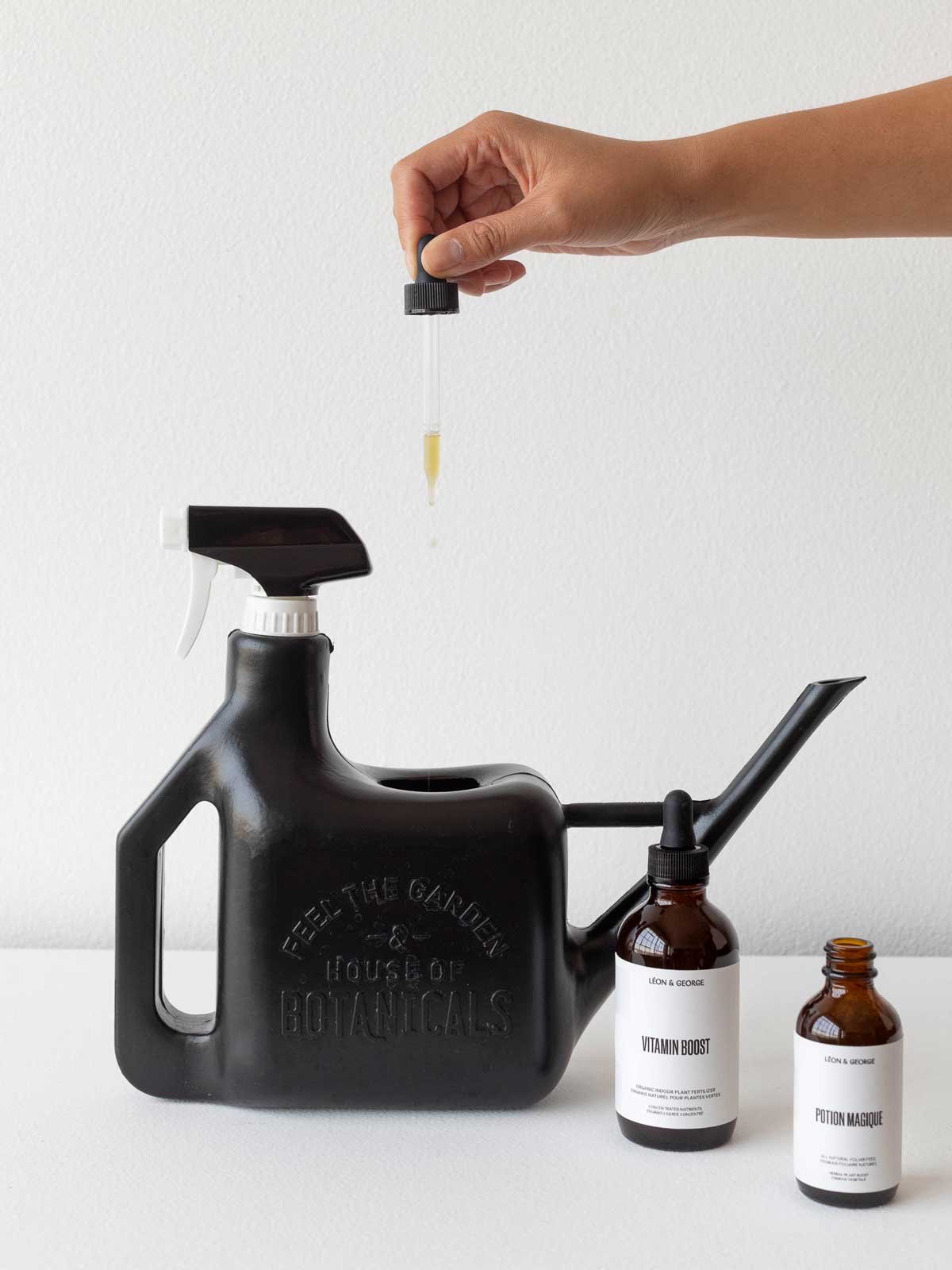Ellen Degenerers’ home, and impressive XL Braided Money Tree. Photo Credit: Architectural Digest
We love getting a peek into the lush interiors of celebrity homes, and nothing is more thrilling than seeing them bedecked with gorgeous, healthy plants! From the cloud-like foliage of a thriving Fiddle Leaf Fig Tree to a well-placed Silver Evergreen glowing in gentle light, greenery is a feast for the eyes. Check out this round-up of our latest favorite celebrity houseplants, and let the inspiration flow!
An absolute jungle of a Monstera
There’s a lot to love about actress Laura Harrier’s gorgeous home (that nostalgic ‘90s palette)! But her huge Monstera Deliciosa is the real showstopper. And the best part is that it’s not unusual for Monsteras to exhibit this degree of epic fullness and growth! When they’re happy, they just don’t quit, so any Monstera can achieve this exceptional size.
A flutter of Fishtail Palm foliage
Fishtail Palms are renowned for their gorgeous leaves, and model Erin Wasson’s is a perfect example of this graceful foliage. The Fishtail gets extra points for the playful, dappled shadows that their silhouette creates in sunny spots.
A jaw-dropping Olive Tree centerpiece
Olive Trees are all the rage these days and its no wonder why: their classic yet dreamy look evokes the warmth and simplicity of a Mediterranean summer. Chrissy Teigan and John Legend’s newsworthy Olive Tree serves as a centerpiece in their home, quite literally bringing a sense of the outdoors in.
An illuminated Silver Evergreen
We cannot get enough of Dita Von Teese’s spectacular home. That vintage chinoiserie sofa, that immaculate art deco rug! And that perfectly glowing, bountifully leafy Silver Evergreen. This low maintenance houseplant is a go-to for those on the go, so it’s no surprise that the Silver Evergreen is a favored celeb houseplant!
An exquisite, emerald Fiddle Leaf Fig Tree
Emblematic of Fiddles at their absolute best, Meg Ryan’s beautiful ficus is thriving in her Soho loft, where it receives an ample stream of clean, bright light.
An elegant and elusive Red Congo
If you loved Game of Thrones (we know we did!) you might have wondered where Jaime Lannister himself watches TV. Well, here’s your answer! Nikolaj Coster-Waldau’s soft and organic living room is a testament to the fact that neutrals can be anything but dull. And his enormous Red Congo is like a vibrant seashell on a shore of earth-tone linen. We adore Red Congos (and so do you guys- they sell like wildfire!) so this one is a truly exciting celeb sighting.
the perfect pairing
What do all these plant stylings have in common, beyond belonging to stars? Each plant is perfectly placed, of course! Check out our light guide or get in touch with us via email to find the ideal plant for your style and space.
More celebrity houseplants
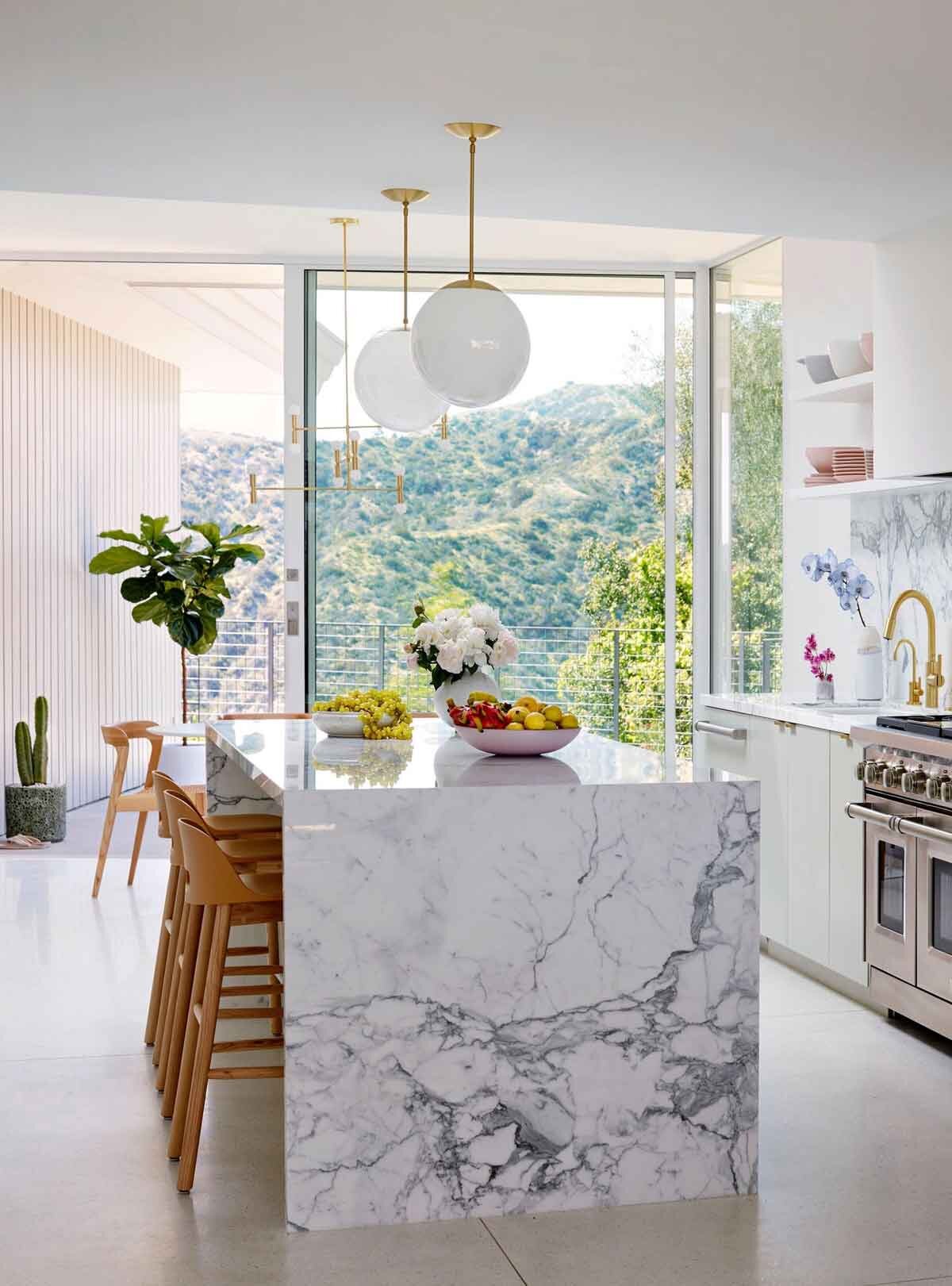




1 - Mandy Moore, Fiddle Leaf Fig Tree
2 - Maura Tierney, Cast Iron Plant
3 - Naomi Watts, Fiddle Leaf Fig Tree
4 - Dakota Johnson, Rubber Tree
5 - Ashley Tisdale, Dragon Tree
Photo credit: Architectural Digest
Easy Care Plants, Delivered
Beautifully potted plants, plus lifetime plant care support. Order online at leonandgeorge.com





